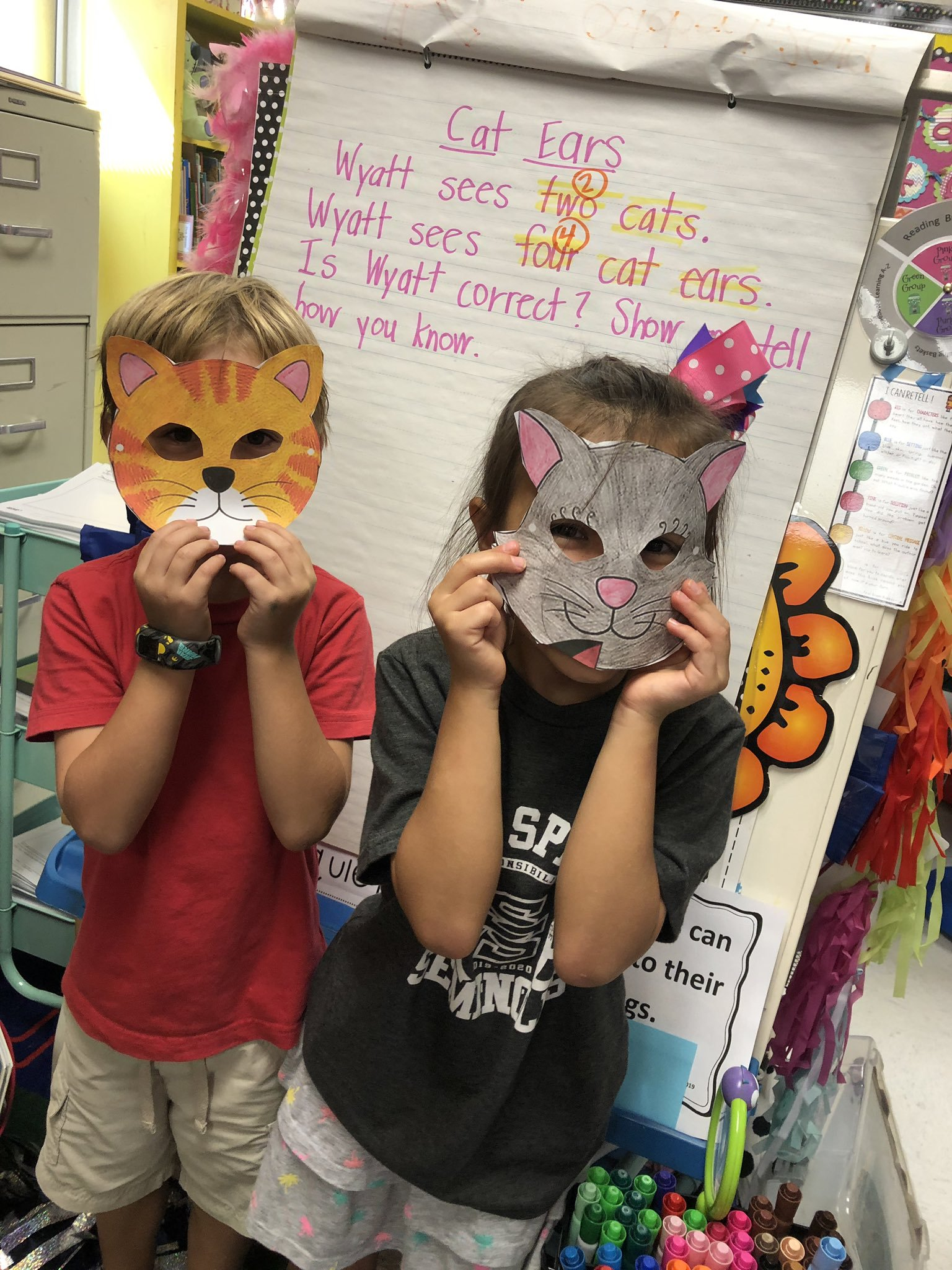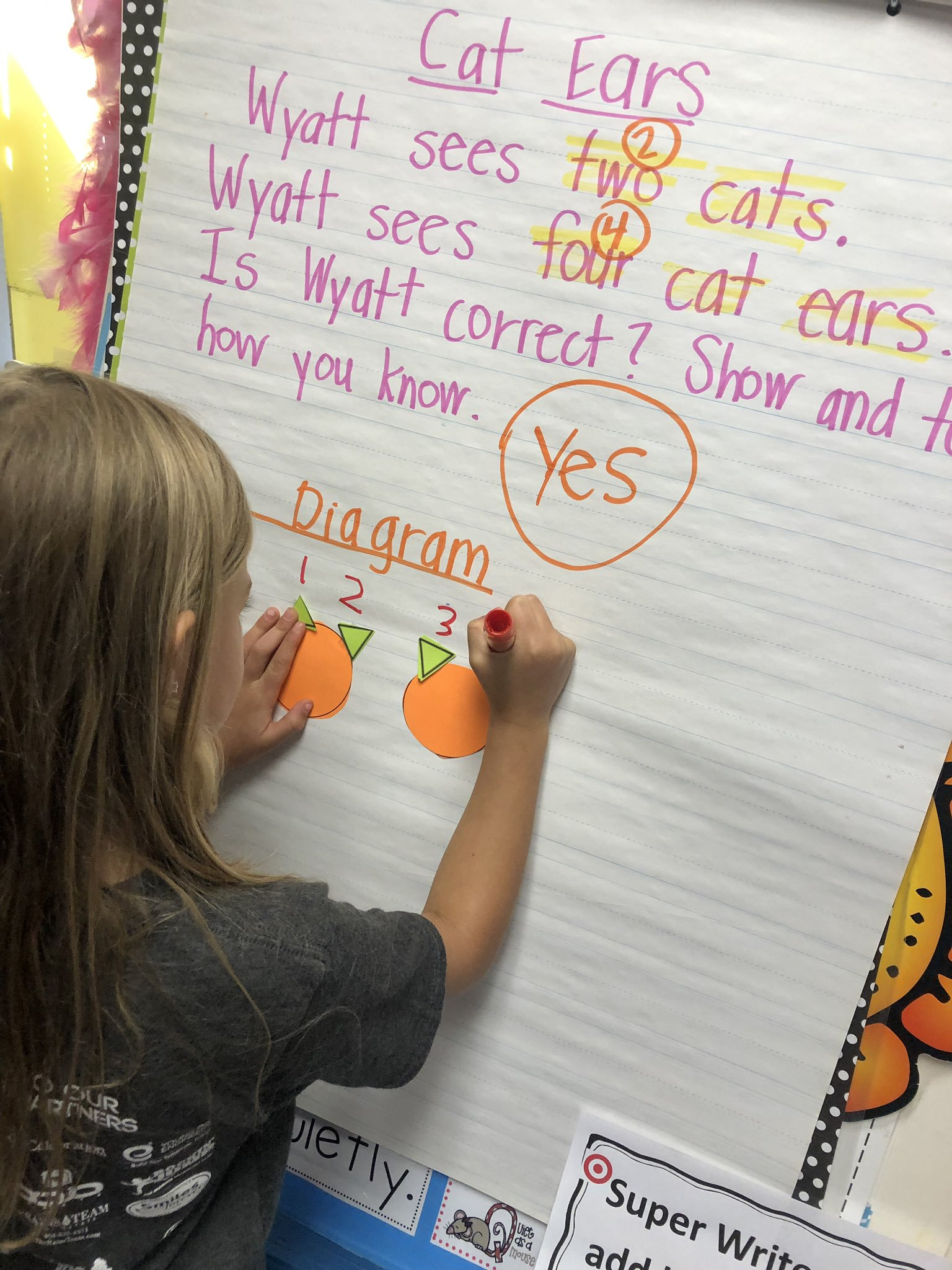Introducing Math Exemplars in Kindergarten
An Exemplars interview with Paula Smathers, Kindergarten Teacher, Spout Springs School of Enrichment
Paula Smathers is a kindergarten teacher at Spout Springs School of Enrichment in Flowery Branch, Georgia. She has been teaching for 18 years and using Exemplars for 5. "When I first started teaching Exemplars I was a little overwhelmed and not really sure about the process and if the students would be able to be successful. After, getting on board with the Exemplars supplemental resource in math, I have seen amazing results and student growth in problem-solving while promoting higher-order thinking skills. Kindergarten students CAN be successful mathematician experts!"
How do you get Kindergarteners excited about math?
I tell all my students that they are mathematicians. I tell them that mathematicians use numbers, words, and symbols. I love to teach them a math call-back cheer: “I say math, you say Exemplars!” as our start-off cheer for every lesson to get their attention and begin with excitement. If I am excited about math the students will catch on to that excitement and enthusiasm. I love to stand by my Exemplars wall during the cheer where I have a poster of kindergarten children holding a sign that reads “I love Math Exemplars.” The first activity that I facilitate with my kindergarten kids is drawing a self-portrait of a mathematician. I show them their very own special Exemplars journal and ask them to turn to the first page and draw a self- portrait of themselves. When they turn to the first page they will find a sticker with directions: Describe yourself as a mathematician. Use pictures, numbers, and words.


What steps do you take to prepare your students for problem solving before you give them a problem to solve?
In Kindergarten it is important to establish routines and procedures that will take place during each lesson and ensure that all your materials have a special place. I always have table helpers that can distribute what is needed and know where it needs to go. I know this takes time and practice at the beginning of the year, but it pays off. You want to set your students up for success for everyone to be an expert!
Are there additional supports you put in place for students of this age?
There are a few things that I make sure I have ready and in a special spot in the classroom.
- Exemplars Journals
- Math Trays (cups and boxes of cutouts, number lines, die cuts, shapes)
- Table Tents for each table with key vocabulary, a spot to meet, a spot to act it out
- Have the task prewritten on chart paper
- Knowing my planned routine so it can be consistent (meet whole group, act it out, chart problem, teacher models on chart, independent work time at tables/teacher conferences and scribing, and whole group share time).
As I am planning a lesson for my kindergarten kids I want to make it fun and engaging for each student. I think about a prop, book, or picture I could use to hook their attention or make a connection and ALWAYS plan to “Act It Out” with concrete objects, props, masks, simple costumes or manipulatives.
Tell us more about “Act It Out”
As I gather the students on the carpet I introduce the problem with a hook, then read the Exemplars task to the students, highlighting the key information that we need to know as mathematicians. The students love to “Act It Out” and in my classroom everyone gets a turn to participate. For example, If the Exemplars is about crayons in a bowl I would have the actual crayons and actual bowls for the students to “Act It Out.” I love to model the Exemplars problem whole group on the carpet while the students can sit in a circle and all watch. I always let the students “Act It Out” until everyone gets a chance.
Each time the students are acting, I am using key vocabulary and important words and numbers that are needed on paper. After acting out the Exemplars, I would model using the chart paper and choose one part to focus and introduce to the students to put on paper. Usually for the first lesson it is to draw the diagram and label. Always having cutouts available is important because you don’t ever want to waste that precious window of focused time. You don’t want a kindergartener spending the whole Exemplars Journal time trying to draw a bicycle with two tires. Bicycle frame cutouts and tire circle cutouts are a necessity to see if the student can solve the problem and label and show what they know. Each week I focus on a new part of showing what they know on paper.
How do you keep the momentum going all year long?
It is so important to keep the love of acting out the task going all throughout the year. Use a lot of praise! After all this hard work, you will start to see a huge difference in what the students can transfer onto paper. Kindergarten procedures and math vocabulary is the foundation. Kindergarten students can do Exemplars when introduced and implemented through “Act It Out” and teaching the transferring to paper process in small lesson introductions.
What would you tell a Kindergarten teacher who is new to Exemplars?
I have to admit I was overwhelmed the first year I taught Math Exemplars. You just have to start and jump in! This is my 5th year teaching Exemplars in Kindergarten and the results and growth that I see in May are incredible.

